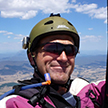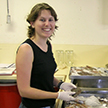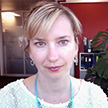80% of Australians live within 50 km of the coast. So 80% of Australians can cycle to the beach, but we don’t! Seriously though, Australia has concentrated so much in the coastal strip, and increasingly in the major urban centres. This concentration puts pressure on the environment and runs the risk of degrading the things of value that made us want to live there. I live 300m from the beach in Hobart, I am part of that pressure.
My teams seek to understand the “Coastal System, ” and help understand what are the important elements in balancing the competing pressures. Increasingly this is required to be done in a quantitative (mathematically defensible way as we try to integrate (add up, attribute and share) the effects of a variety of things that are affecting a region. So they are the modellers.
But models without data may not represent the real world real well. (understatement). We cannot observe, record and make sense of the movement of every atom. So we accept a subset of this. Finding the right balance of affordable observations and data required to build an accurate picture of an environment with a defined level of certainty is a daunting task. This involves an iterative discussion between the observationalists and modellers. Finally when we cannot observe something preperly, i.e. at the time or space scales we want then we might try to build a new instrument or develop a new method for obtaining that measurement. Into this space step the technologists.
Karen Wild-Allen Working with a new instrument
I have set up models of the atmosphere to better understand how the air moves, this was for my out of work activity of paragliding, but I have found the experience helps me to talk to the modellers, I spent years taking observations for oil companies and working out better ways to make those observations. So I think of myself as working (in my research) on the science of observation, an observational technologist, if you like.







